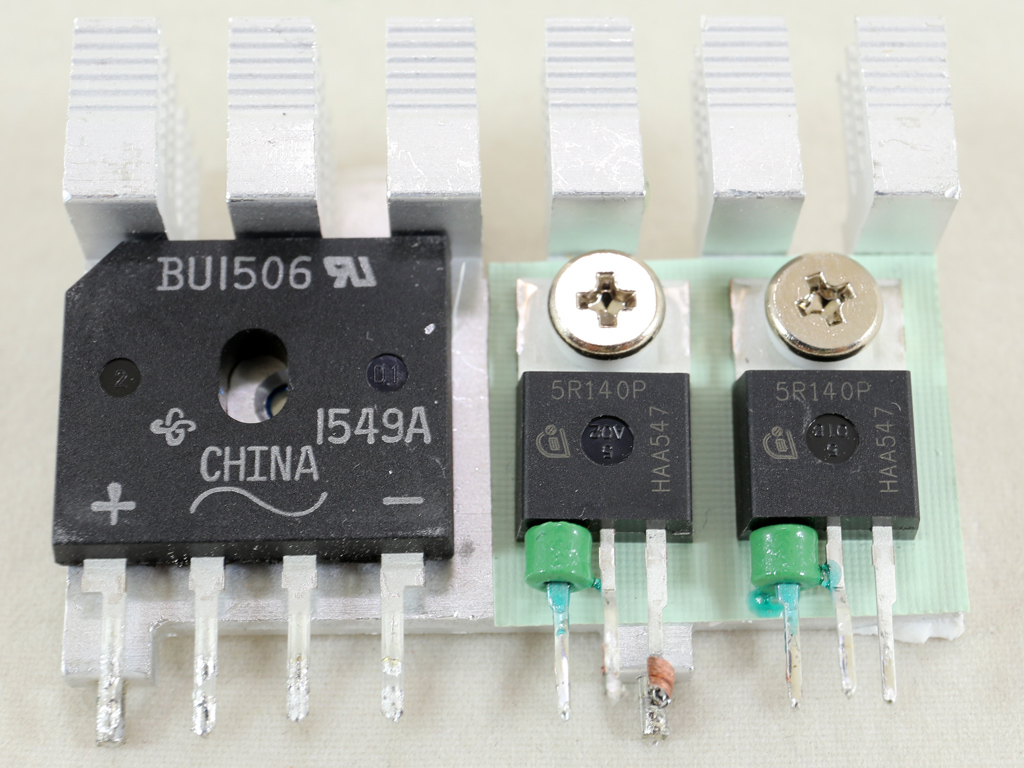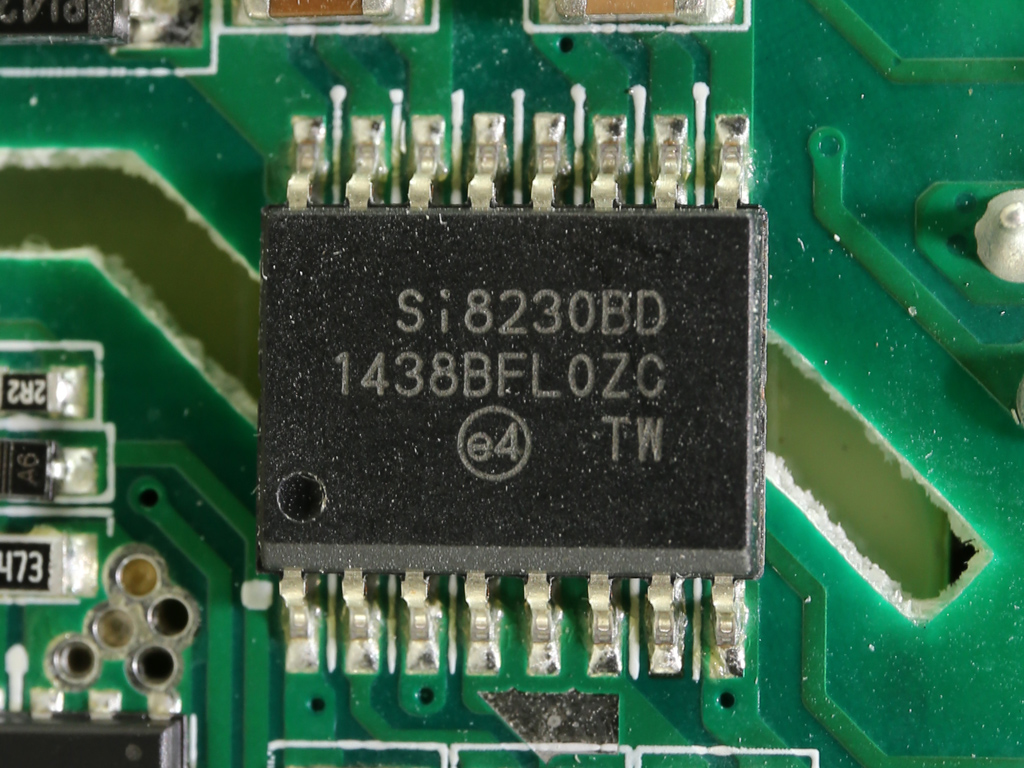Thermaltake Toughpower SFX 600W PSU Review
The highest-end member of Thermaltake's Toughpower SFX Gold line is on our test bench today. It offers Gold efficiency, modular cabling, and a semi-passive fan mode. Thanks to its 600 W capacity, you can easily build a powerful system with it.
Why you can trust Tom's Hardware
A Look Inside And Component Analysis
Parts Description
Before proceeding with this page, we strongly encourage you to a look at our PSUs 101 article, which provides valuable information about PSUs and their operation, allowing you to better understand the components we're about to discuss. Our main tools for disassembling PSUs are a Thermaltronics soldering and rework station, and a Hakko FR-300 desoldering gun.
| General Data | |
|---|---|
| Manufacturer (OEM) | Enhance Electronics |
| Primary Side | |
| Transient Filter | 4x Y caps, 2x X caps, 2x CM chokes, 1x MOV |
| Inrush Protection | NTC Thermistor |
| Bridge Rectifier(s) | 1x Vishay BU1506 (600 V, 15 A @ 80 °C) |
| APFC MOSFETs | 2x Infineon IPP50R140CP (550 V, 15 A @ 100 °C, 0.14 Ω) |
| APFC Boost Diode | 1x CREE C3D08060A (600 V, 8 A @ 152 °C) |
| Hold-up Cap(s) | 1x Nippon Chemi-Con (450 V, 330 uF, 2000 h @ 105 °C, KMR) |
| Main Switchers | 2x Infineon IPP50R140CP (550 V, 15 A @ 100 °C, 0.14 Ω) |
| FET Driver | 1x Silicon Labs Si8230BD |
| APFC Controller | Champion CM6500 |
| Switching Controller | Champion CM6901 |
| Topology | Primary side: Half-Bridge & LLC Resonant Converter Secondary side: Synchronous Rectification & DC-DC converters |
| Secondary Side | |
| +12V MOSFETs | 6x International Rectifier IRFH7004PbF (40 V, 164 A @ 100 °C, 1.4 mΩ) |
| 5V & 3.3V | DC-DC Converters: 2x Infineon BSC018NE2LS (25 V, 97 A @ 100 °C, 1.8 mΩ), 2x Infineon BSC050NE2LS (25 V, 37 A @ 100 °C, 5 mΩ) PWM Controllers: 2x ANPEC APW7073 |
| Filtering Capacitors | Electrolytics: Nippon Chemi-Con (105 °C, KZE), United Chemi-Con (105 °C, LXZ) , Rubycon (105 °C, ZL), Suncon (105 °C) Polymers: Unicon |
| Supervisor IC | SITI PS223 (OVP, UVP, OCP, SCP, OTP ) |
| Fan Model | Everflow R128015SM (80 mm, 12 V, 0.25 A, 3000 RPM, 33.27 CFM, 31 dB[A], Dual Ball-Bearing) |
| 5VSB Circuit | |
| Rectifier | 1x STP3NK90ZFP (900 V, 1.89 A @ 100 °C, 4.8 Ω) |
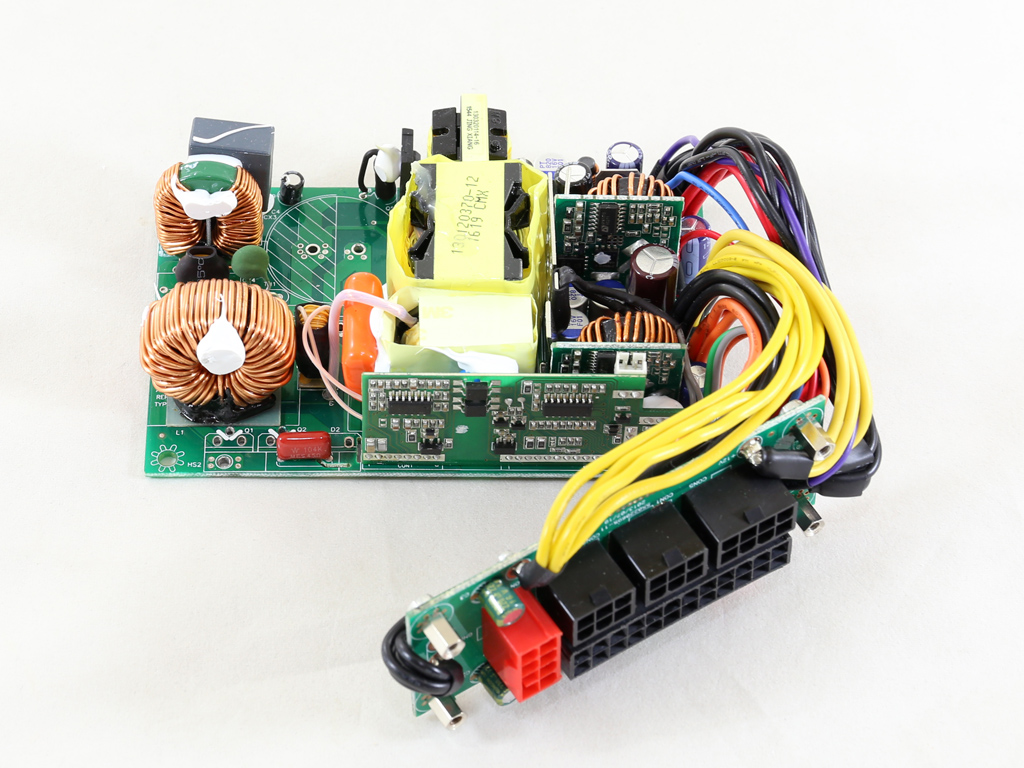
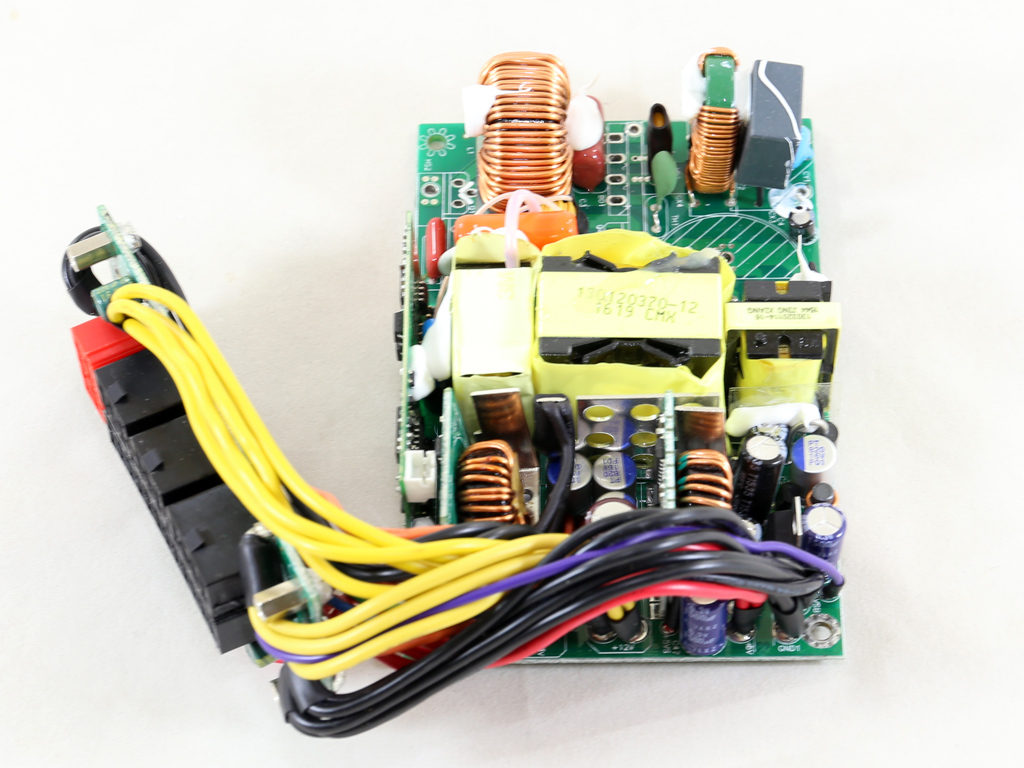
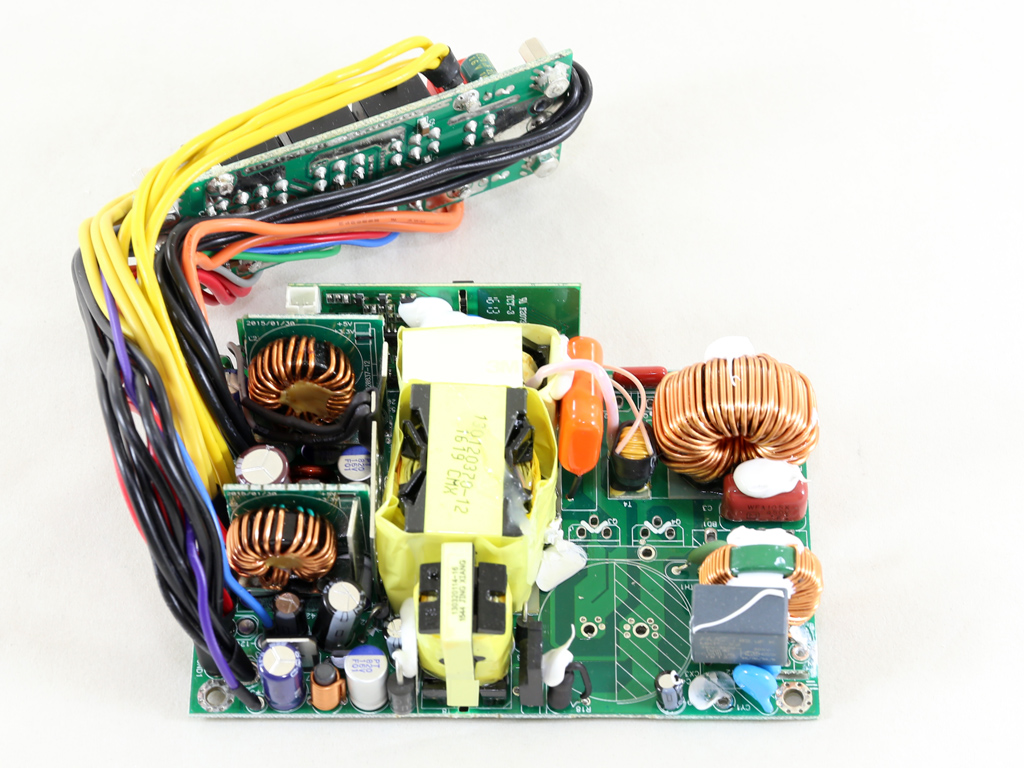
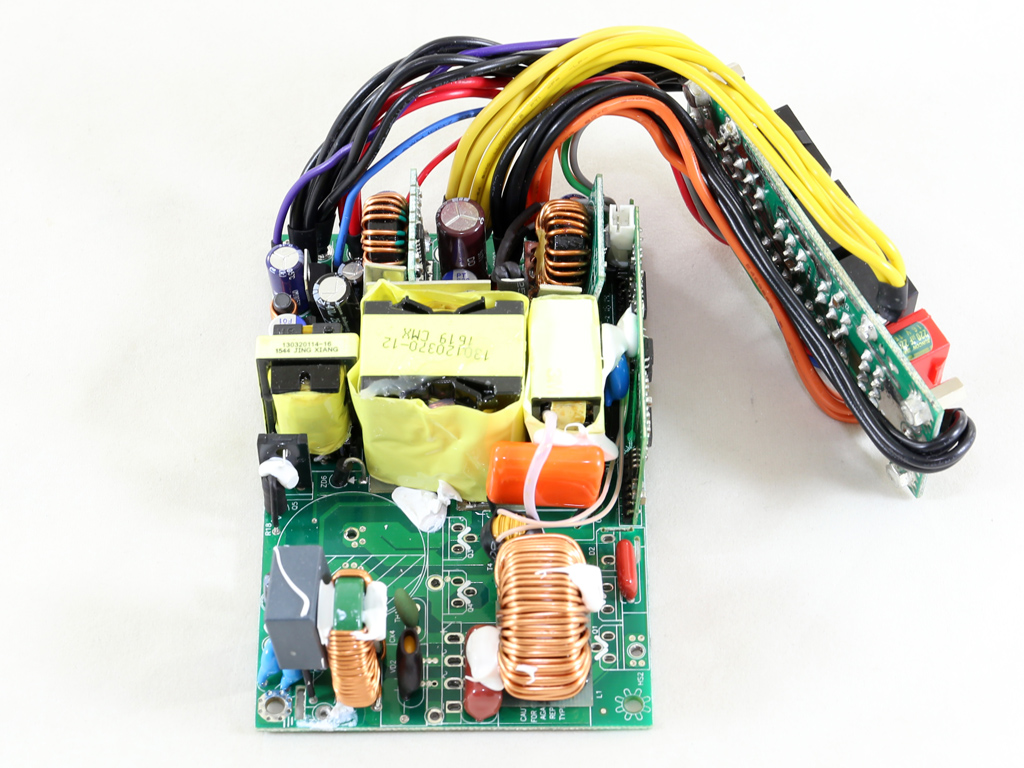
The PSU's OEM is Enhance Electronics, and the platform Thermaltake uses is the same one found in SilverStone's SX600-G. The tiny PCB is overpopulated with components, making it hard to identify them. This means we have to desolder some parts in order to get a better view of others, such as the switching FETs. On the primary side, an LLC resonant converter is used for increased efficiency, while on the secondary side, a pair of DC-DC converters generate the minor rails.
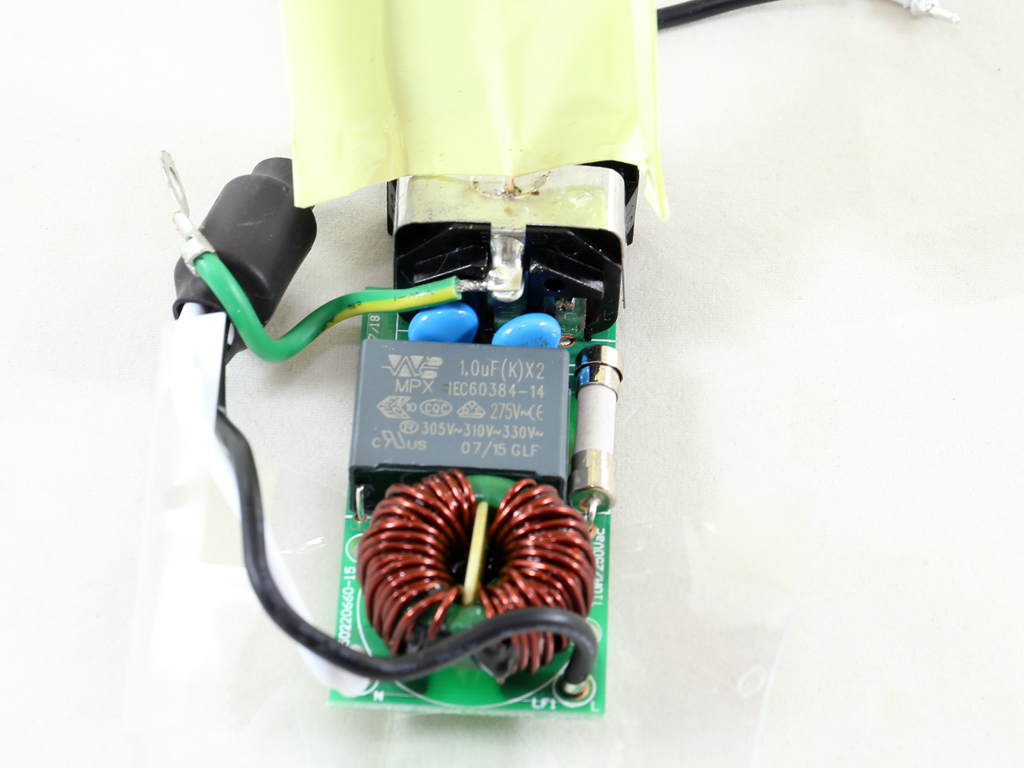
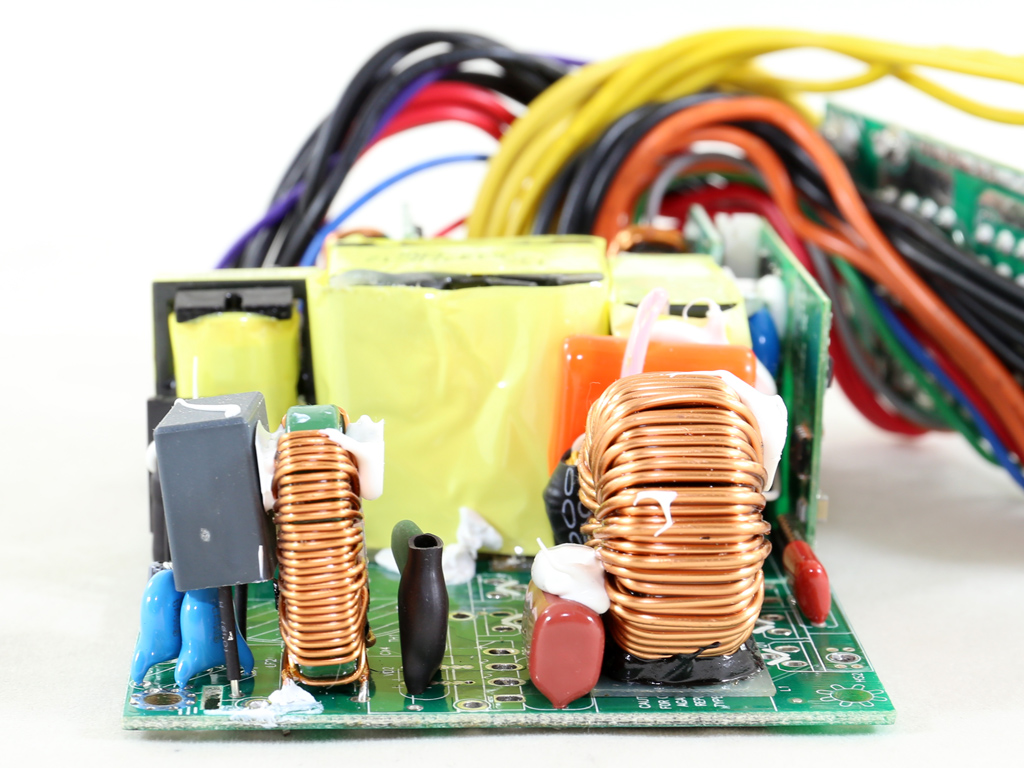
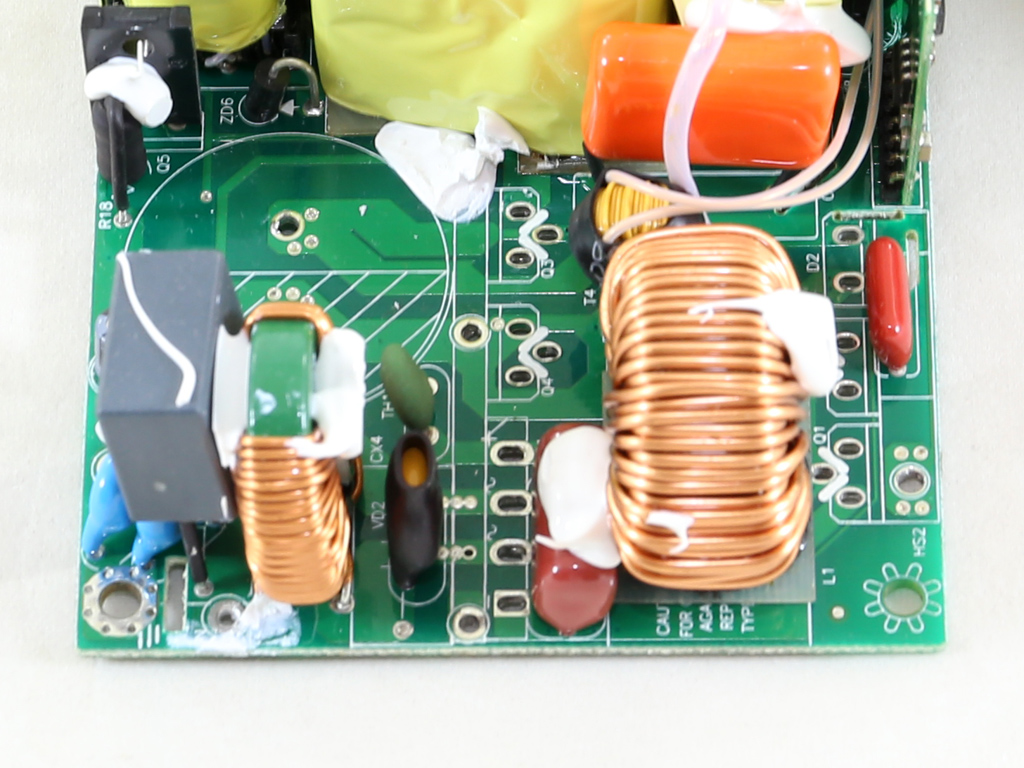
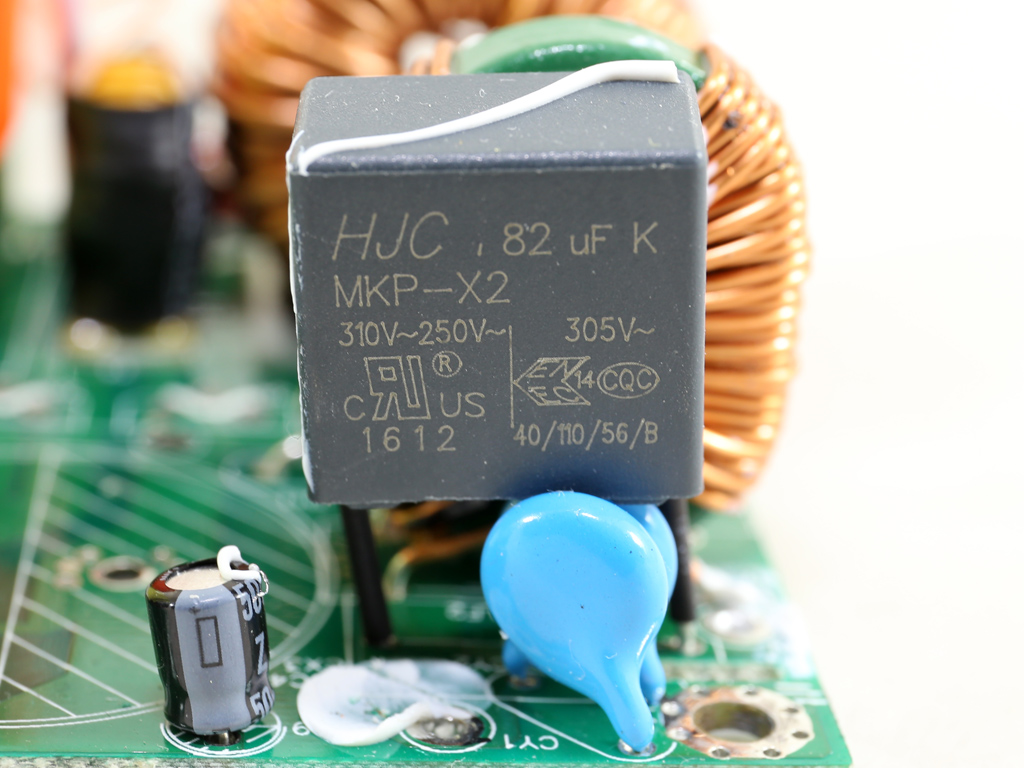
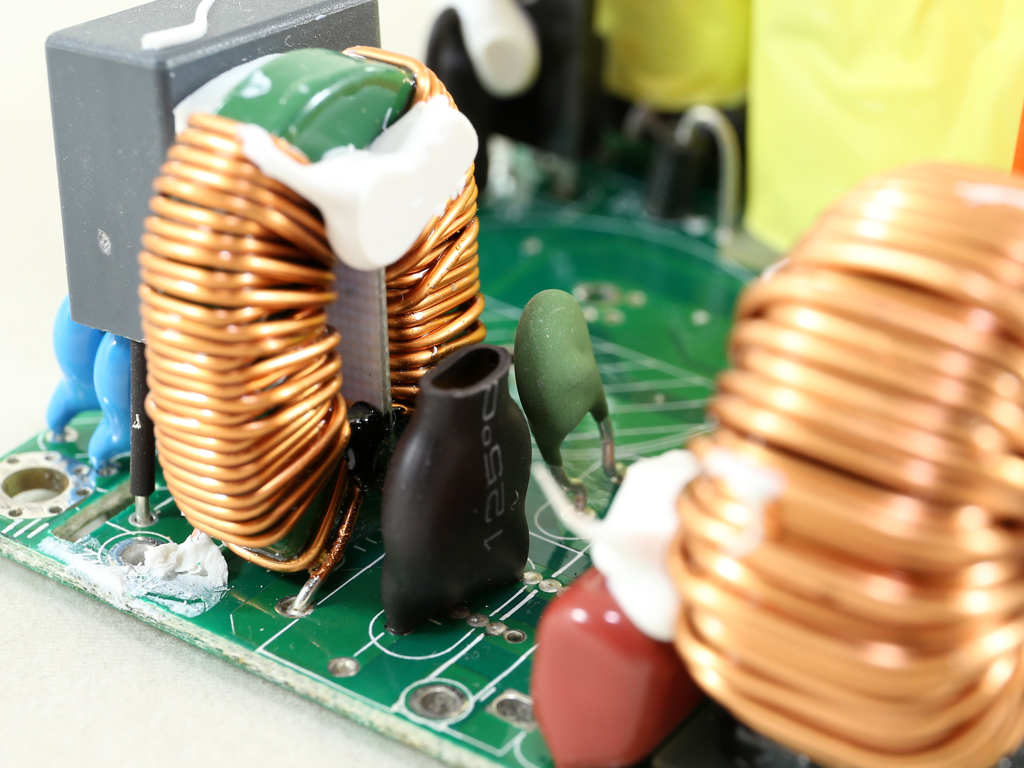
The first part of the transient filter is installed on a small PCB that also holds the AC receptacle. We find two Y caps and a single X cap on this board. The EMI filter continues on the main PCB with two Y caps and a single X one, a CM choke, and an MOV (Metal Oxide Varistor). Right next to the MOV is an NTC thermistor, which provides protection against large inrush currents. Unfortunately, Enhance didn't use a bypass relay to help it cool down faster.
The single bridge rectifier, a Vishay BU1506, is bolted onto the same heat sink as the primary switchers, a pair of Infineon IPP50R140CP FETs. The bridge rectifier can handle up to 15 A of current, so it will easily support this PSU.
The driver IC that controls the main switching FETs is a Silicon Labs Si8230BD, installed on the solder side of the main PCB.
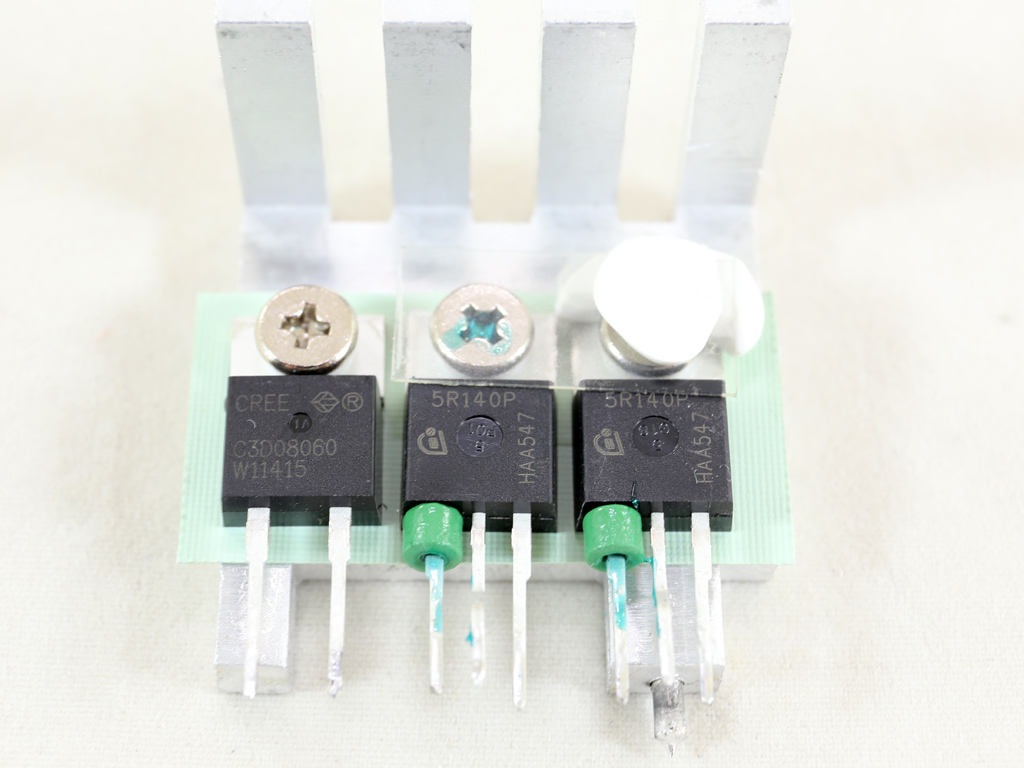
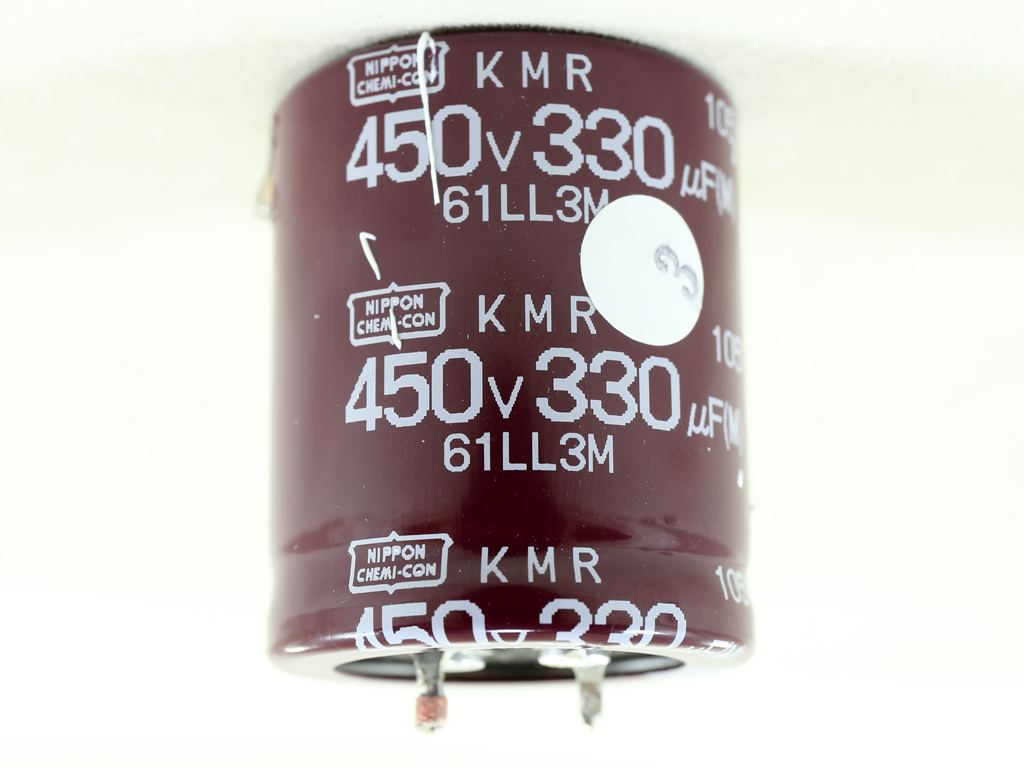
Two Infineon IPP50R140CP FETs are used in the APFC converter, along with a CREE C3D08060A boost diode. The bulk cap is by Nippon Chemi-Con (450 V, 330 uF, 105 °C, KMR series) and its capacity is low for a 600 W PSU. As a result, our measured hold-up time doesn't satisfy the ATX spec's requirements.
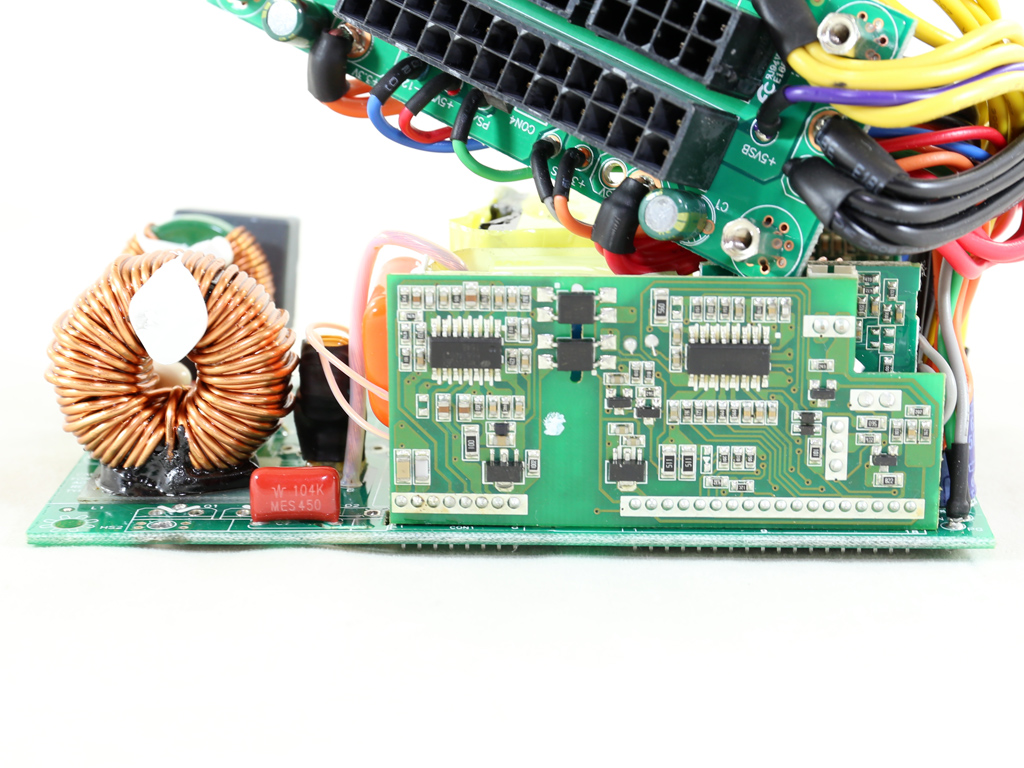
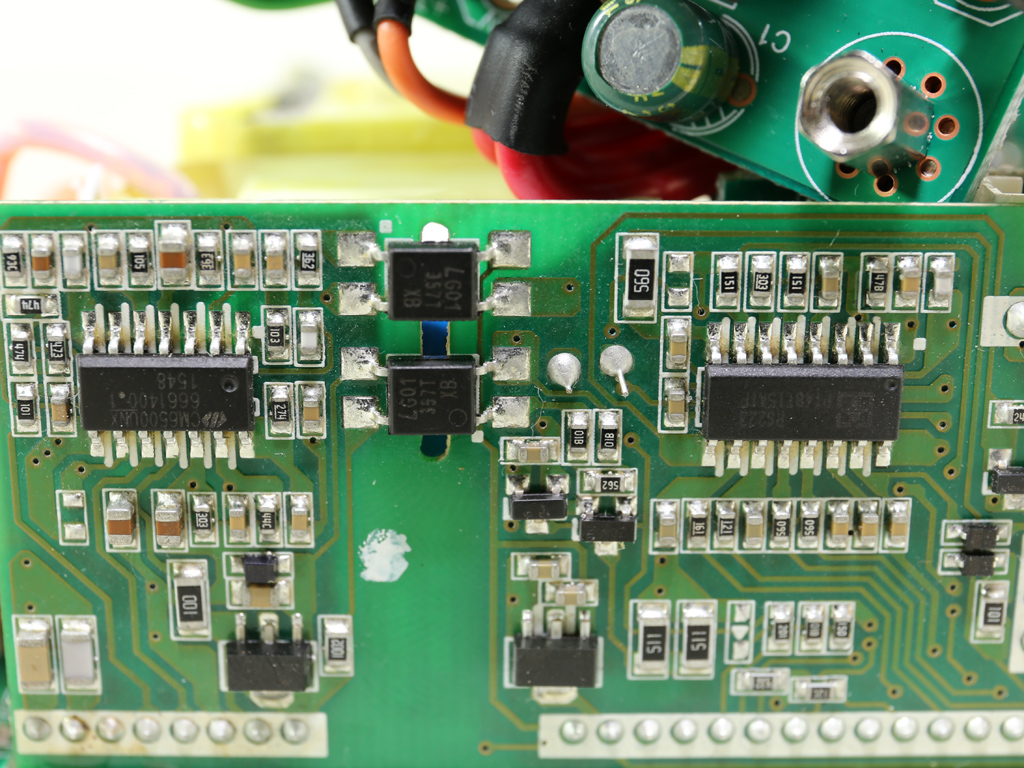
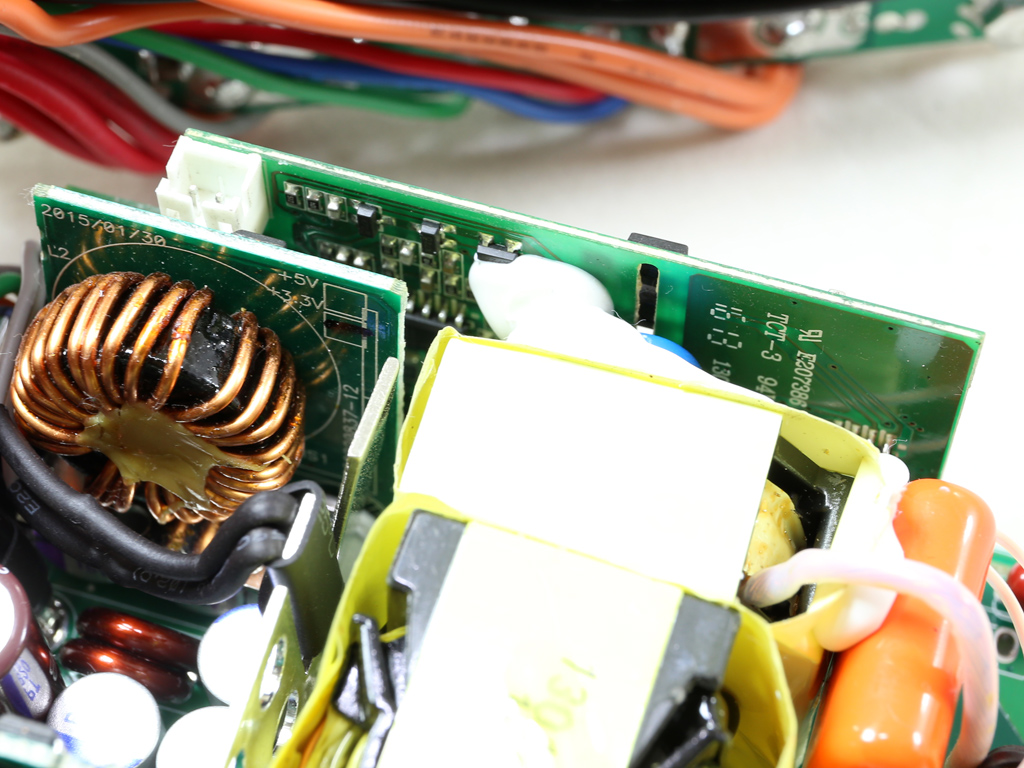
A large vertical board on the secondary side holds the PFC controller, a Champion CM6500 IC, along with the supervisor IC, a SITI PS223. This is among the few supervisor ICs supporting over-temperature protection out of the box, so we find it strange that this protection isn't listed in the PSU's specs. We'll run some additional tests to determine whether it's truly missing.
Get Tom's Hardware's best news and in-depth reviews, straight to your inbox.
The LLC resonant controller, a Champion CM6901 IC, is installed on the front of the same PCB. This controller operates the main switchers in PWM mode under light loads, and switches to FM mode when demands increase.
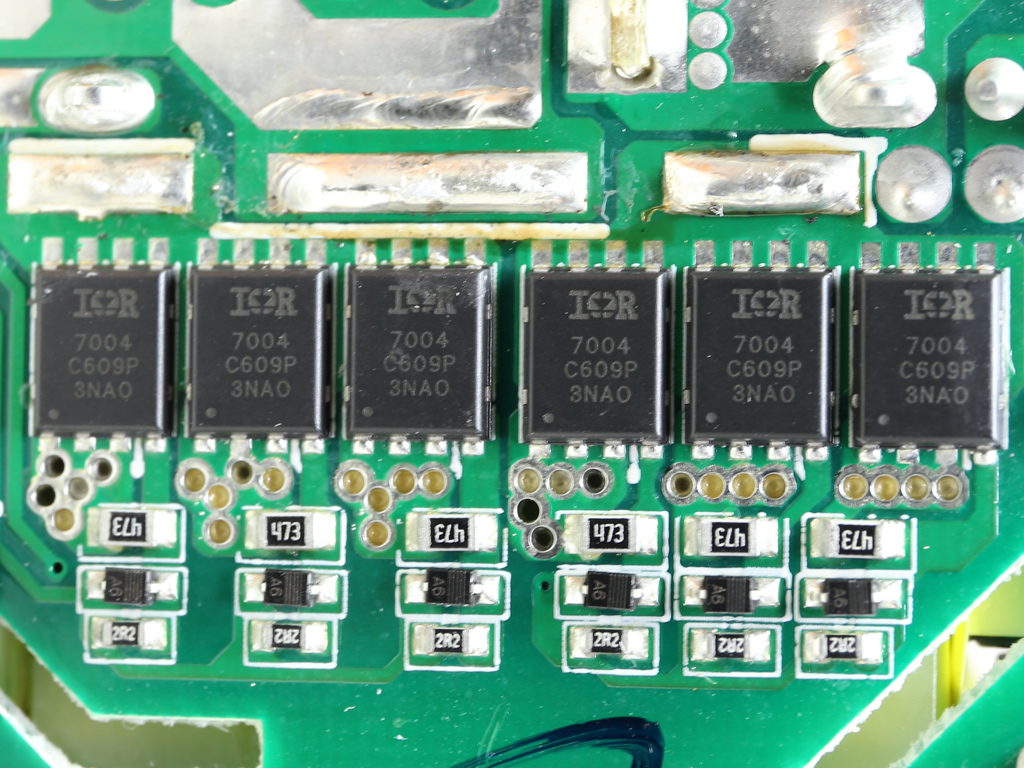
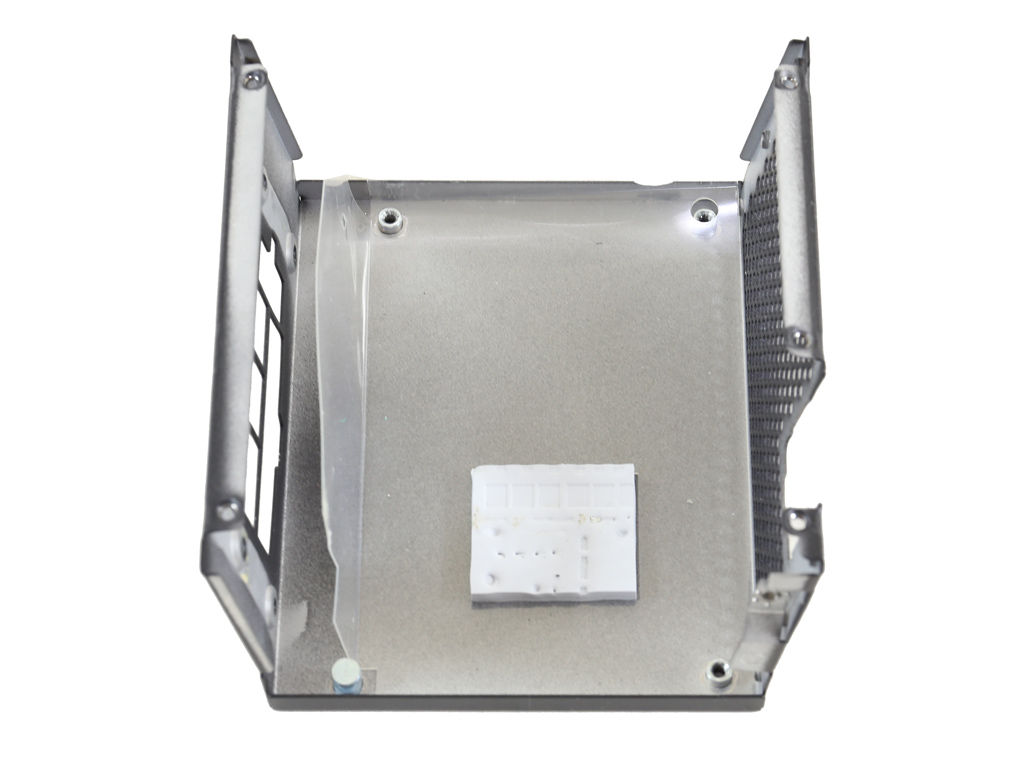
Six IRFH7004PbF FETs generate the +12V rail. All of them are installed on the solder side of the main PCB and are mostly cooled by the chassis, which they come in contact with through a thermal pad.
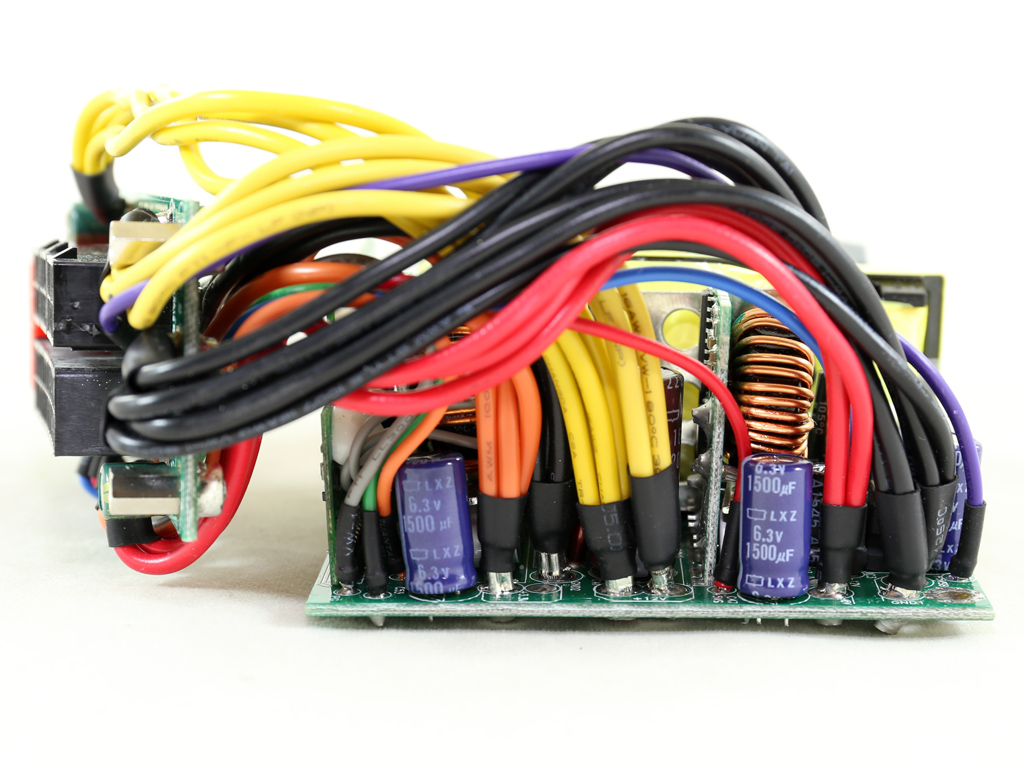
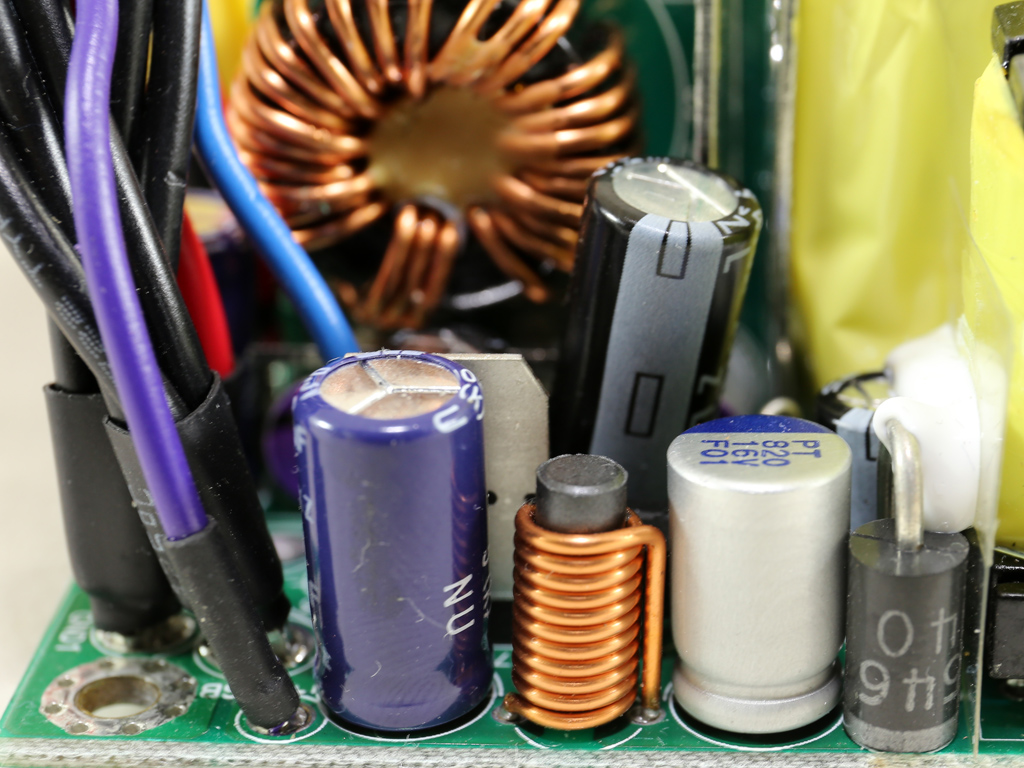
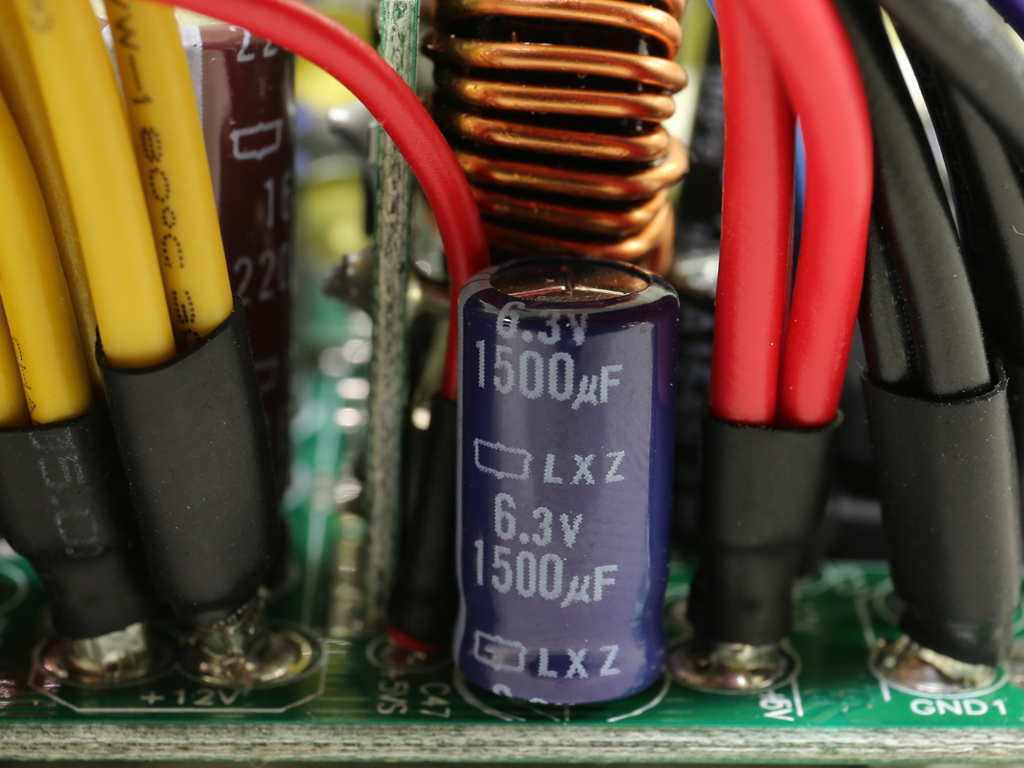
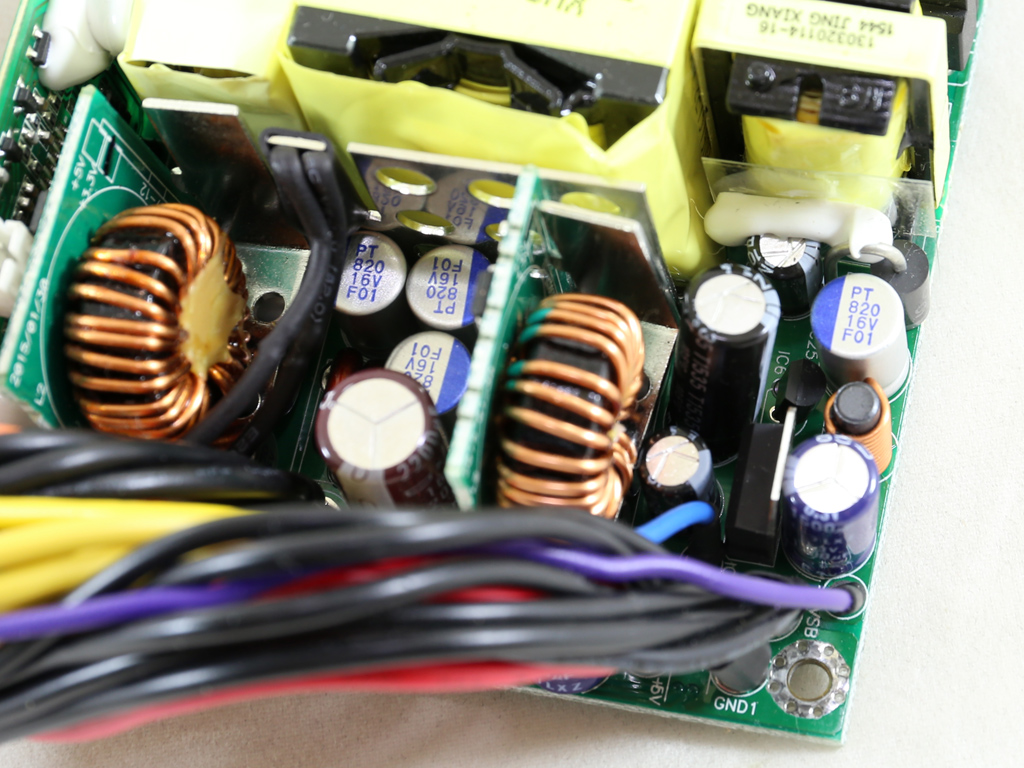
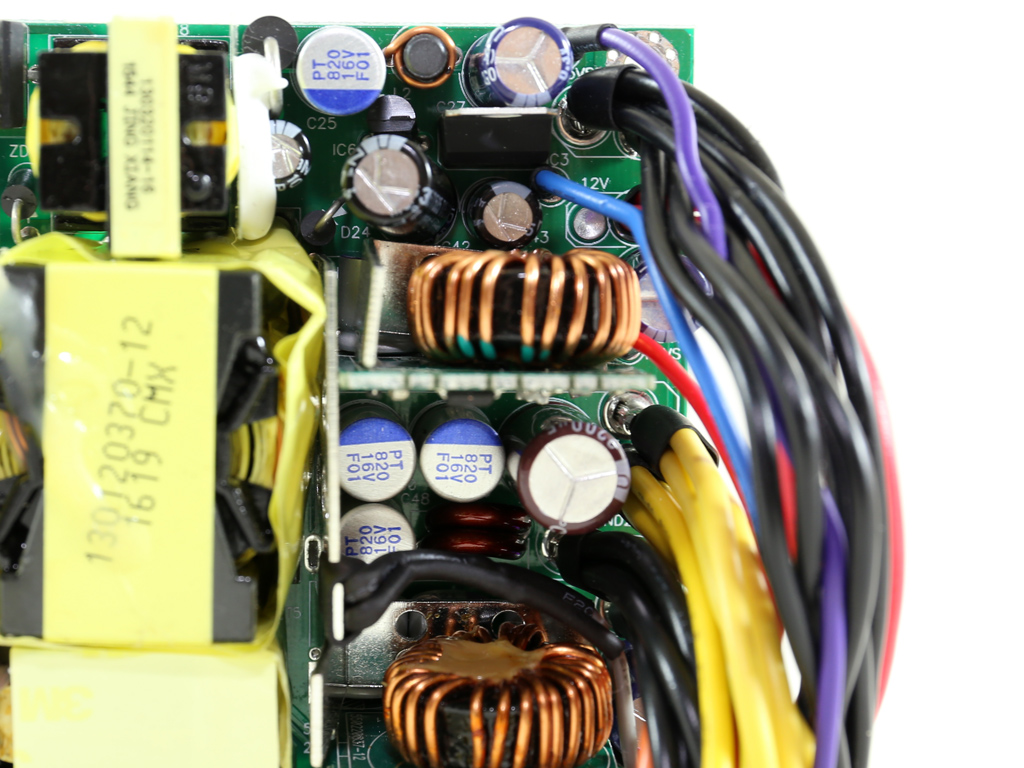
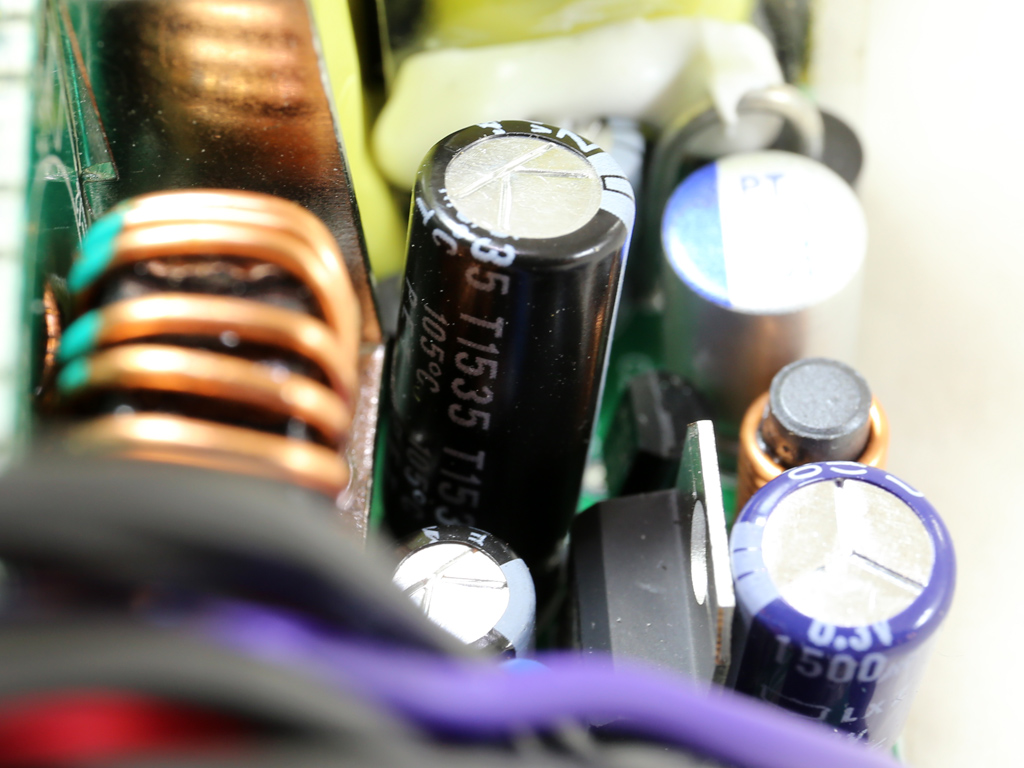
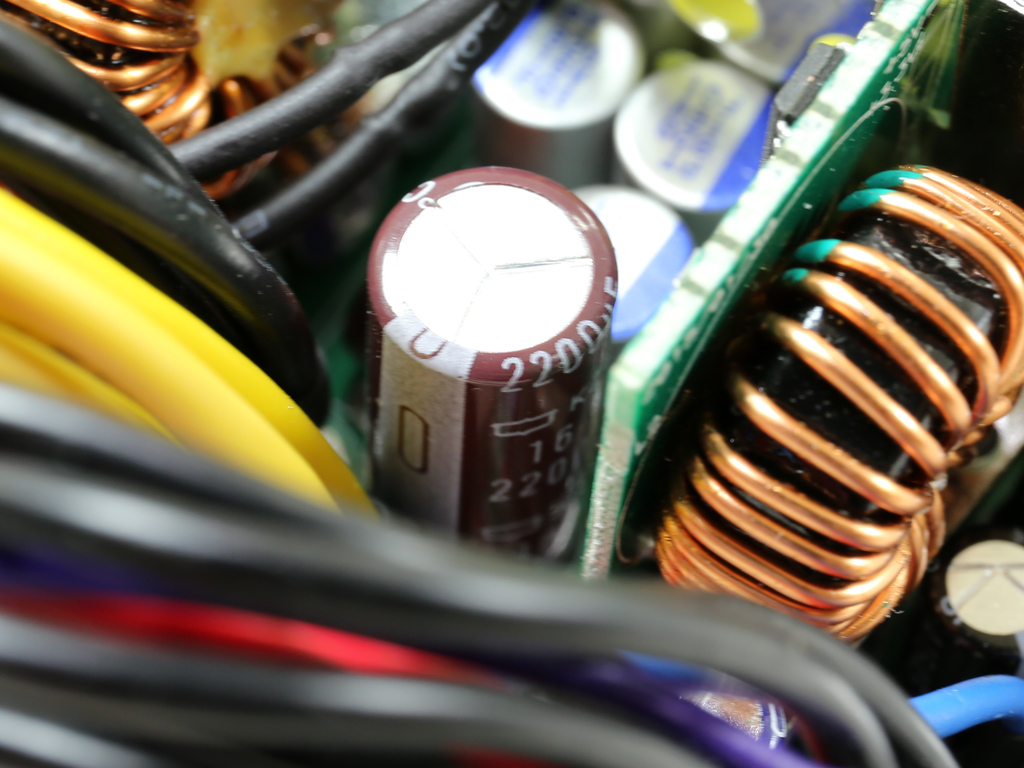
The filtering electrolytic caps are of high quality; they are provided by Japanese manufacturers and have good specs. You see, capacitor origin isn't the only important consideration. Specifications also play a key role, since you can't directly compare a 85 °C cap to a 105 °C one, or caps with different dimensions, voltage ratings, and capacities.
Besides electrolytic caps, we also find several polymer ones most likely sourced from Unicon.
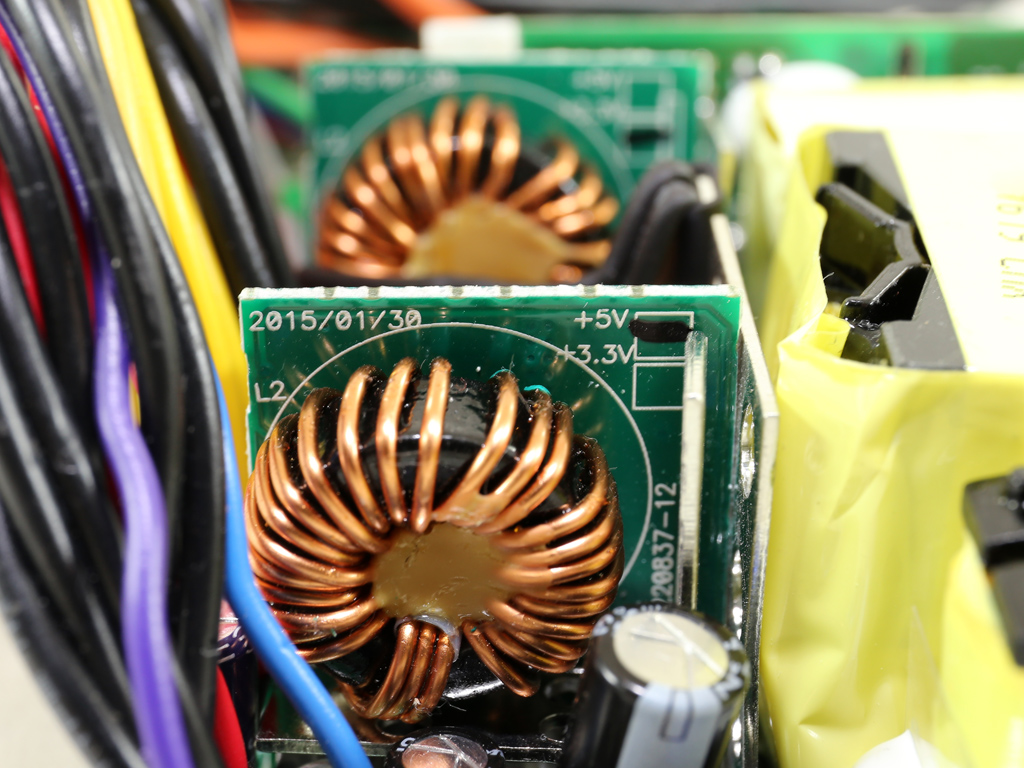

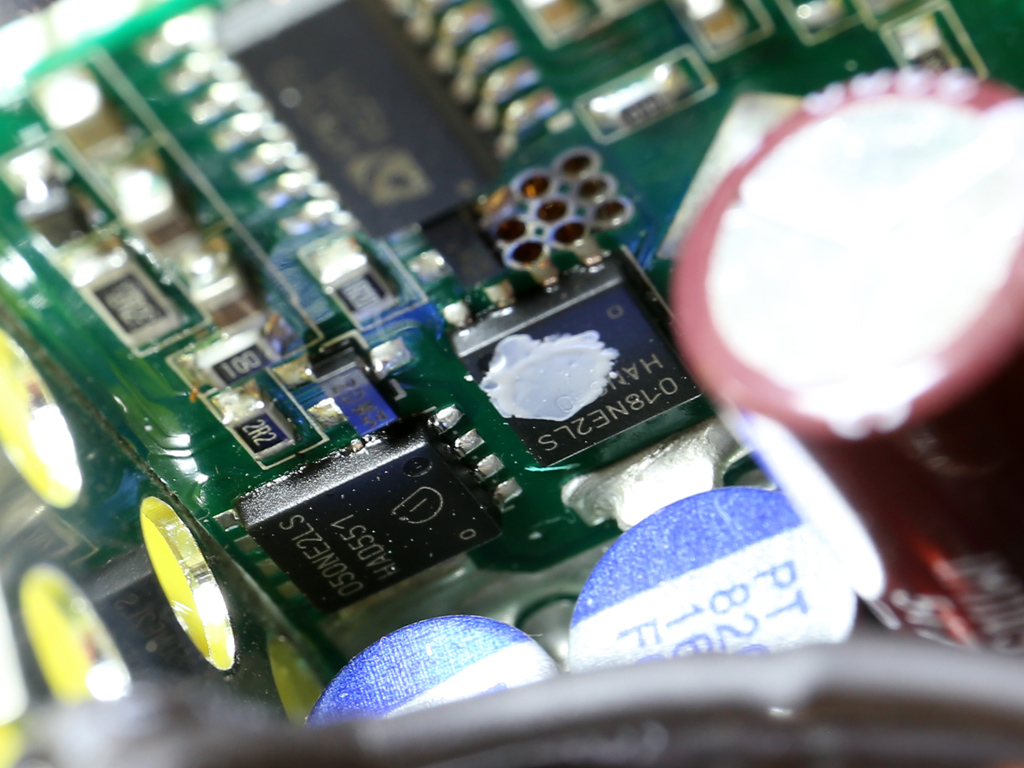
A couple of voltage regulation modules handle the minor rails. An ANPEC APW7073 PWM controller is used on each of them, along with two FETs (Infineon BSC018NE2LS and BSC050NE2LS). The problem we see here is that both VRMs, along with the other components on the secondary side, aren't properly cooled by the 80 mm fan, which mostly occupies space on top of the primary side. Moreover, the PCB that holds the AC receptacle covers a significant part of the secondary side, blocking its airflow.
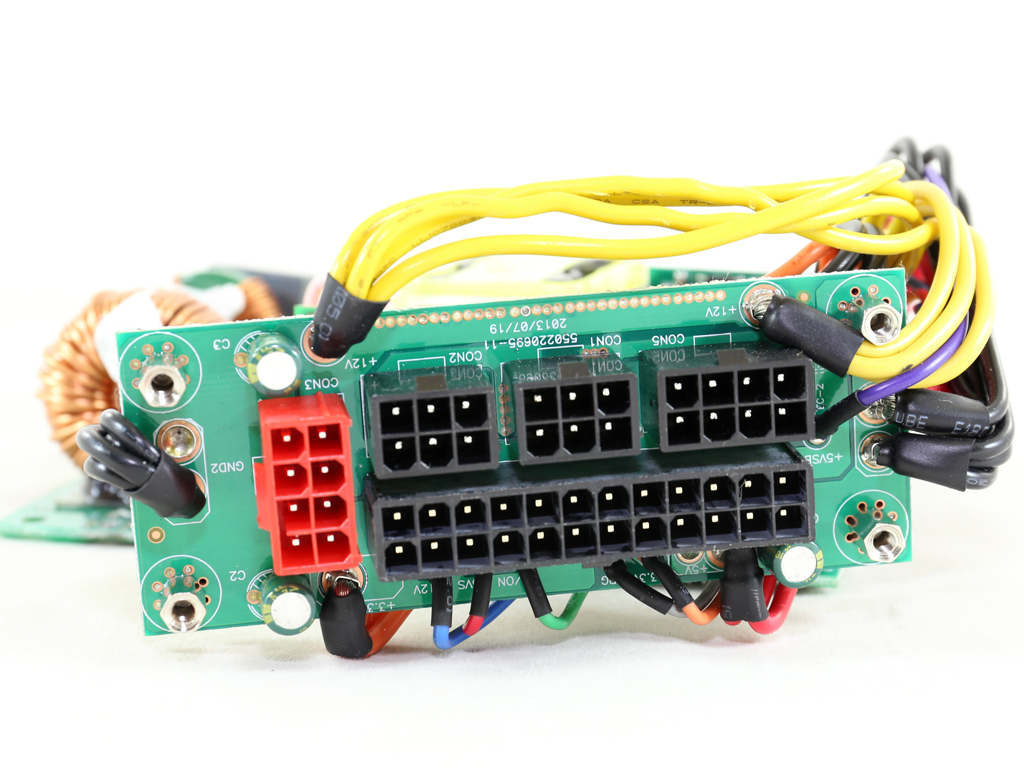
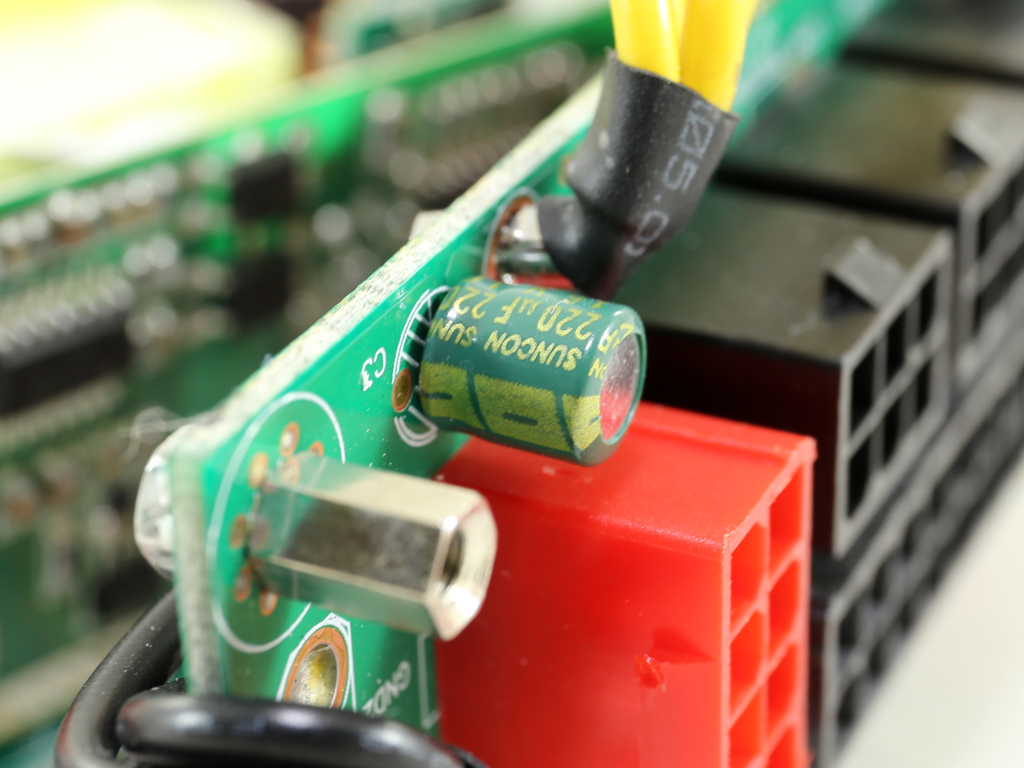
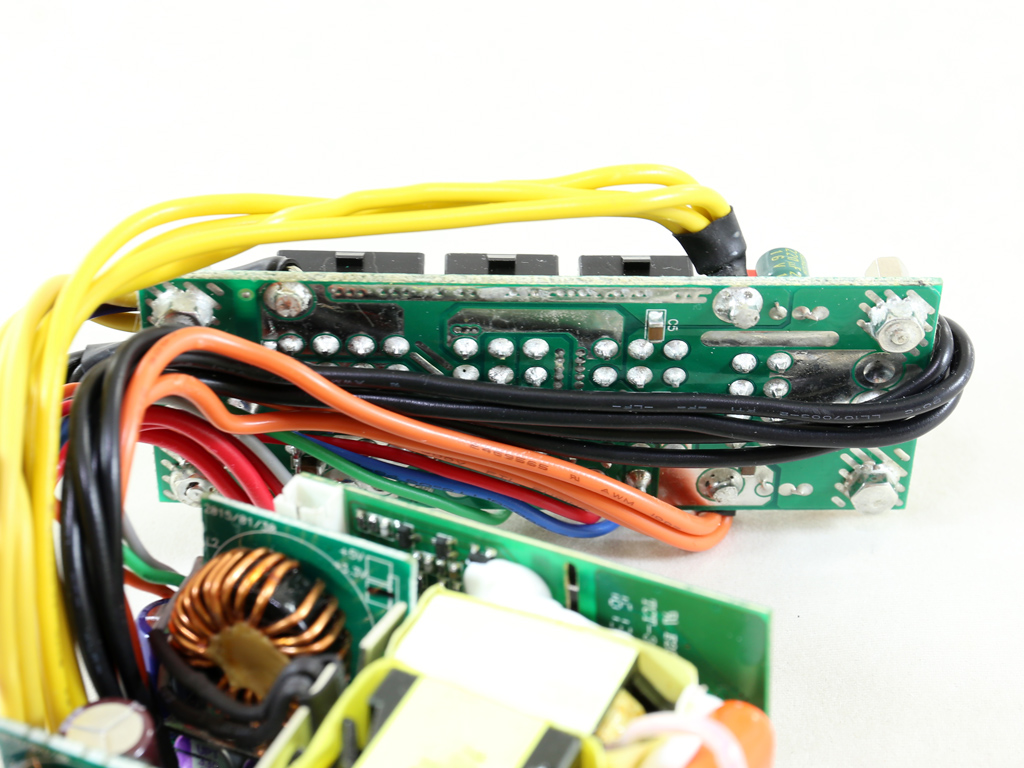
Small Suncon caps on the front of the modular PCB provide some extra ripple filtering. Unfortunately, that board is too small, so it only has room for a limited number of sockets. As a result, we don't get an optimal number of cables and connectors.
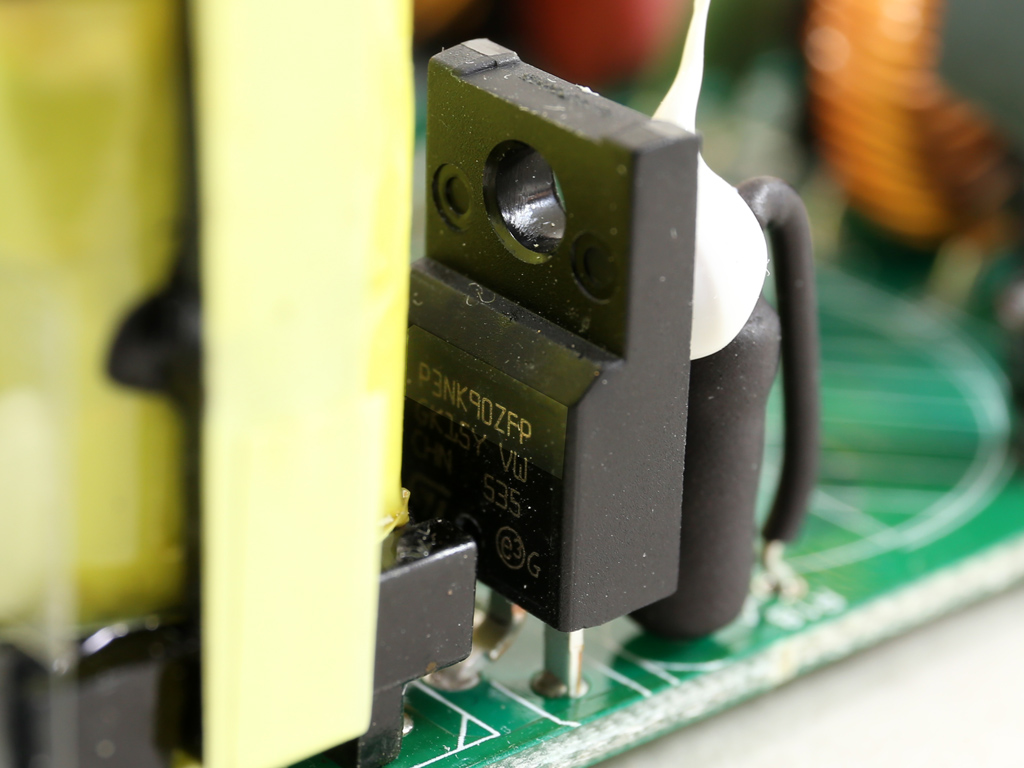
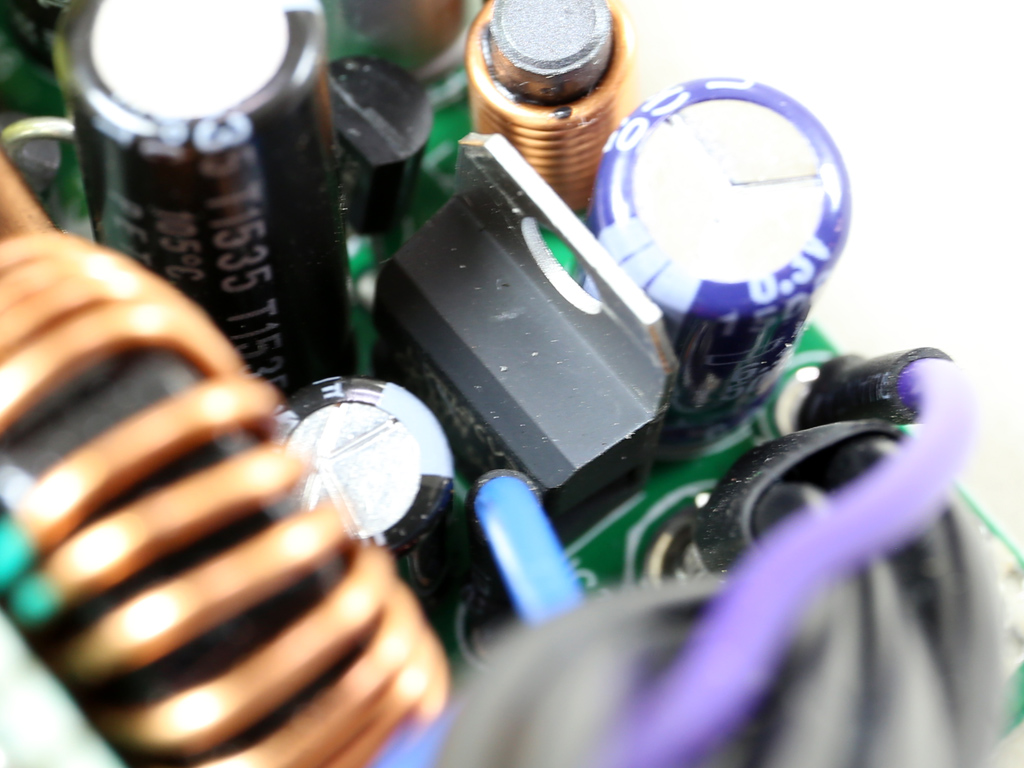
An STi STP3NK90ZFP FET is used to rectify the 5VSB rail, while the -12V rail is handled by another rectifier.
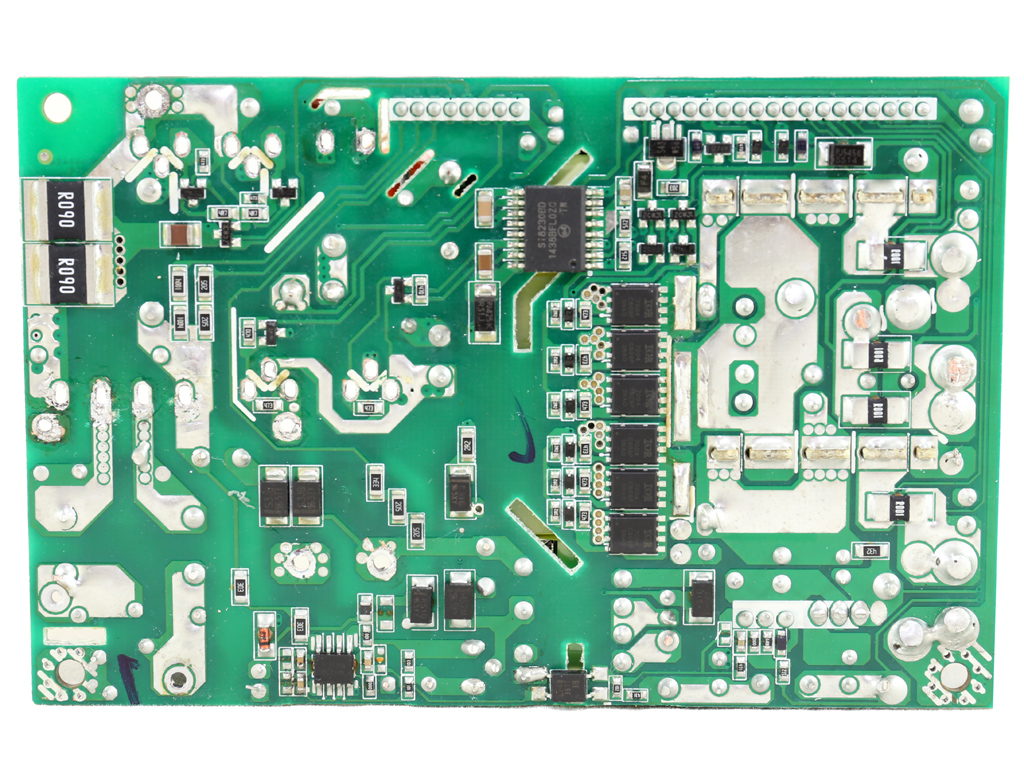
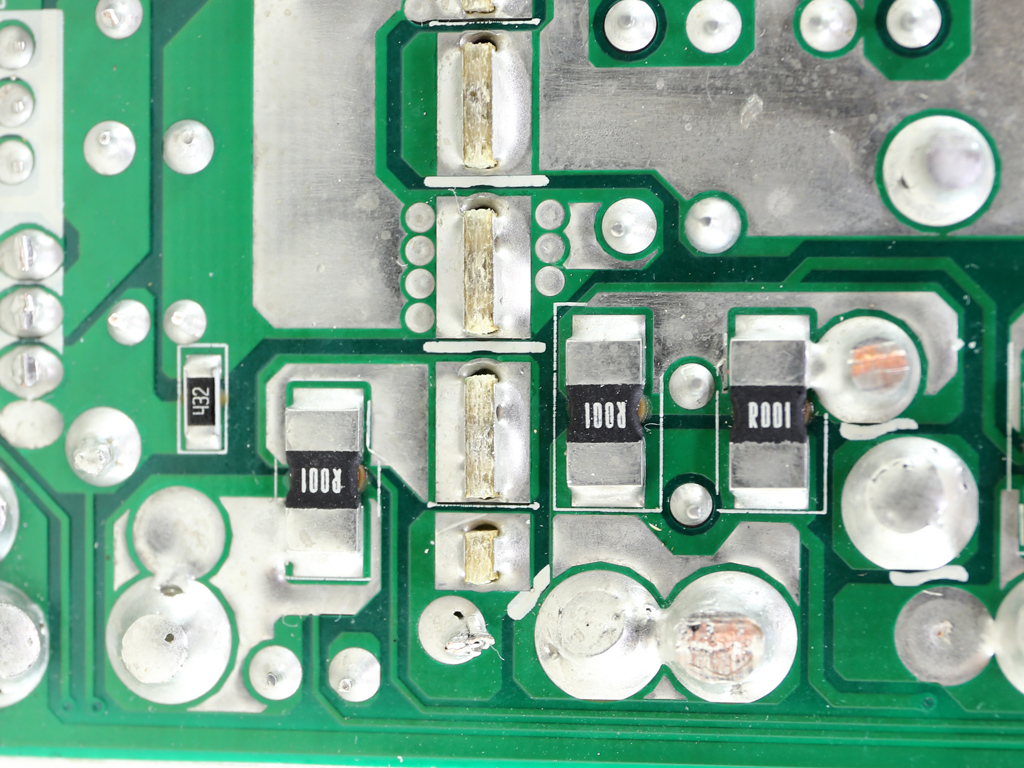
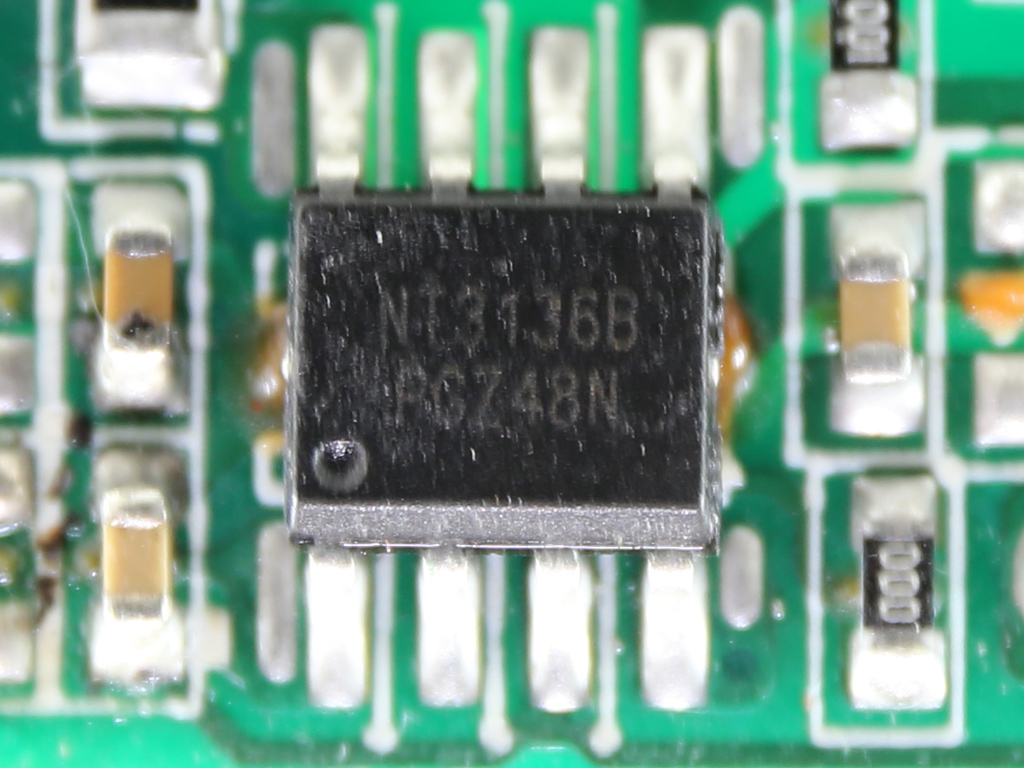
The soldering quality is quite good; that's typical of power supplies from Enhance.
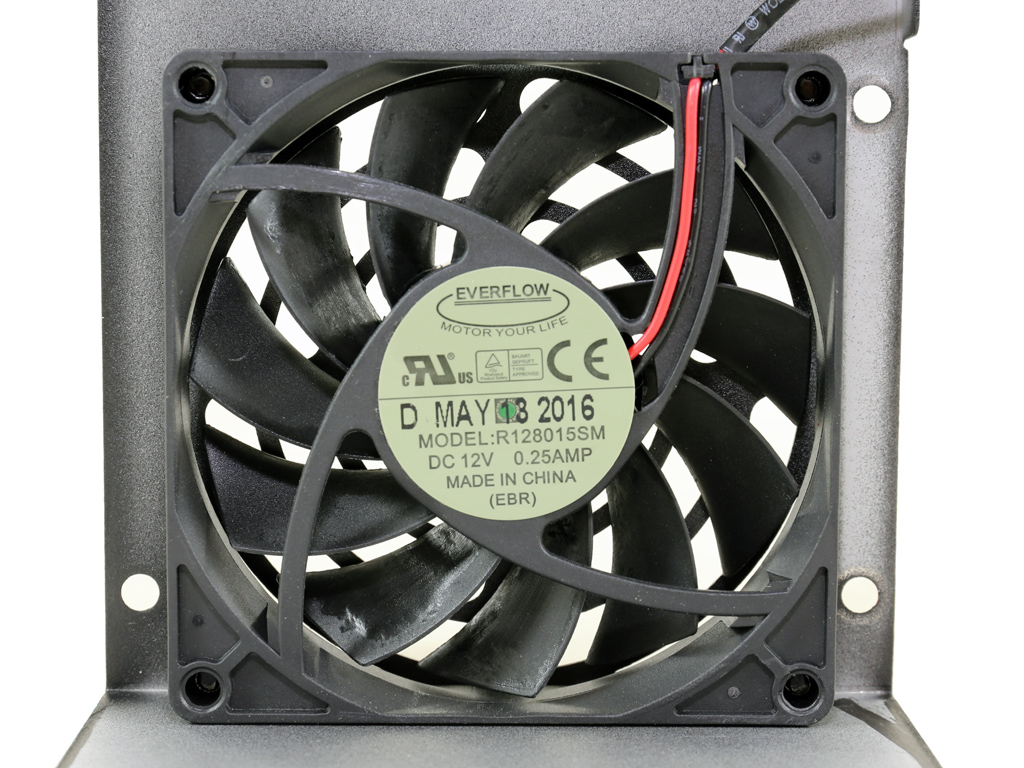
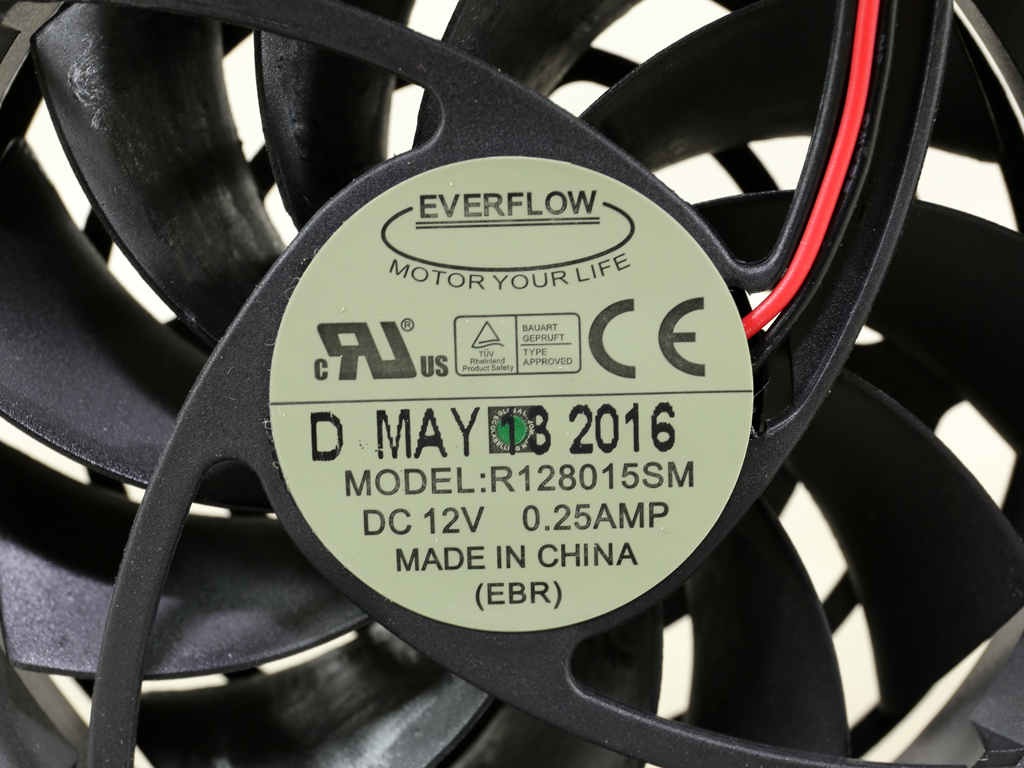
The cooling fan, an Everflow R128015SM, uses double ball-bearings, and it operates quietly despite its small diameter. It is supported by a semi-passive mode, though that doesn't last for long.
Current page: A Look Inside And Component Analysis
Prev Page Packaging, Contents, Exterior, And Cabling Next Page Load Regulation, Hold-Up Time And Inrush Current
Aris Mpitziopoulos is a contributing editor at Tom's Hardware, covering PSUs.
-
Pixdawg Based on this review, I wouldn't buy the thing for half its listed price. How the devil did it get a Gold rating, anyway?Reply -
Clamyboy74 You would only need 2 pcie cables since these psu are designed for sff builds, with only 1 gpu since you also use a m-itx board.Reply -
turkey3_scratch This power supply is a disaster. It does not have working protection circuitry and should be a 450W unit, not a 600W unit.Reply
This thing sucks.
This unit is a 450W power supply IMO. Basically, Thermaltake probably took their 450W power supply, slapped 600W on it, kept the same amount of PCIe cables, and called it a 600W power supply. This power supply is stupid, I don't know who would buy it. That's just my opinion of course, but safety should be the most important thing of a power supply, and even thought it didn't blow up, if it had 510mv of ripple at 110% load, imagine what it had at 140% load before it shut off? Probably 2000mv of ripple. There goes the GPU. There goes the CPU. There goes everything!
But Thermaltake knows that not a single person who purchases this thing will have done their PSU research, and therefore not a single person buying this thing will probably have a system that demands more than 250-300W. Thermaltake preys on the vulnerabilities of the uneducated, it's a disgrace, it's disgusting.
18596603 said:You would only need 2 pcie cables since these psu are designed for sff builds, with only 1 gpu since you also use a m-itx board.
You wouldn't need a 600W power supply with an SFF build period. It razzes my berries that the mere fruit of the existence of this thing is an example of an unethically engineered product that nobody needs but is designed for those who don't know what they don't need. -
jonnyguru Reply18596603 said:You would only need 2 pcie cables since these psu are designed for sff builds, with only 1 gpu since you also use a m-itx board.
Not until the Corsair SF Series was released while I was sitting behind a desk at Corsair did I realize just how many people use SFX power supplies in full size cases. Absolutely AMAZES me. So.. yeah... -
cats_Paw As much as I give Tomshardware a lot of pain for many of their articles This one is a very solid test.Reply
The PSU is one of the most important parts of the PC (Id say its THE most important), so a good review of a PSU is always welcome.
Well done toms. -
Dark Lord of Tech I commend Thermaltake for releasing into the SFX market , more competition is good for the industry. With very little to choose from , it's still a huge plus to have more SFX units out there on the retail market.Reply -
turkey3_scratch Reply18599544 said:I commend Thermaltake for releasing into the SFX market , more competition is good for the industry. With very little to choose from , it's still a huge plus to have more SFX units out there on the retail market.
Yeah but this is not what I'd call competition... Nobody needs to compete against Thermaltake's product since it stinks. -
nem3s1s GOOD QUALITY as usual on Enhance but seems they need smart enginiers to up level to the designs. wireless etcReply
